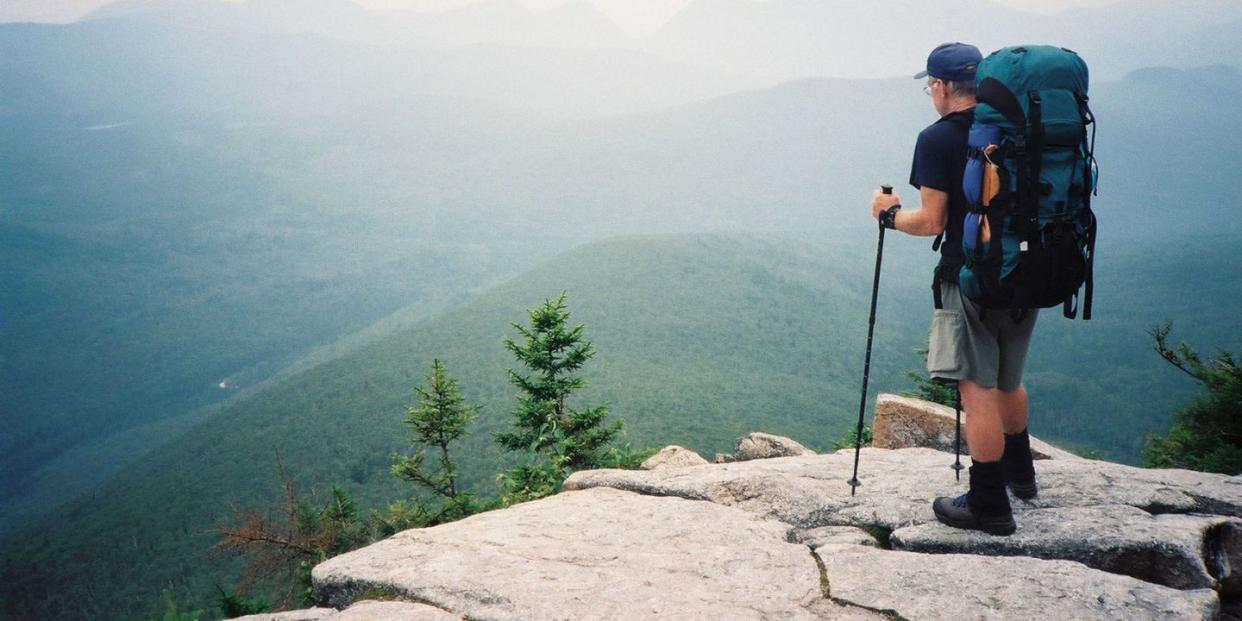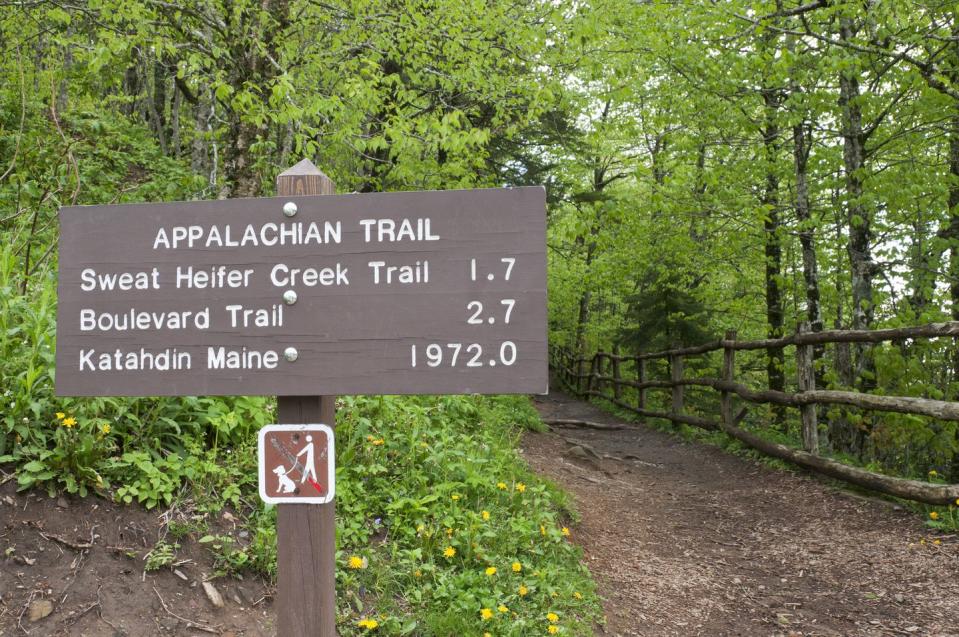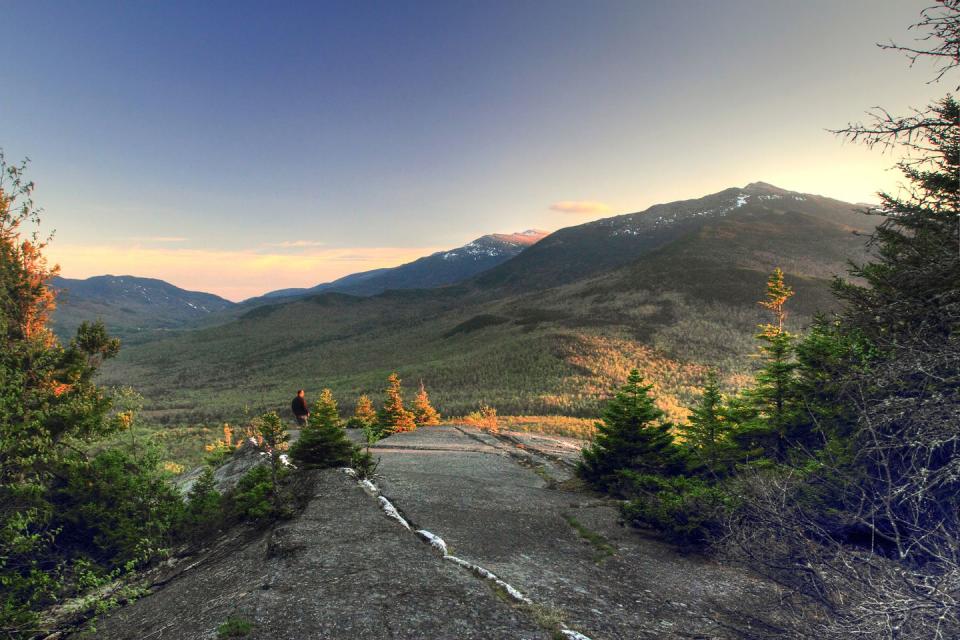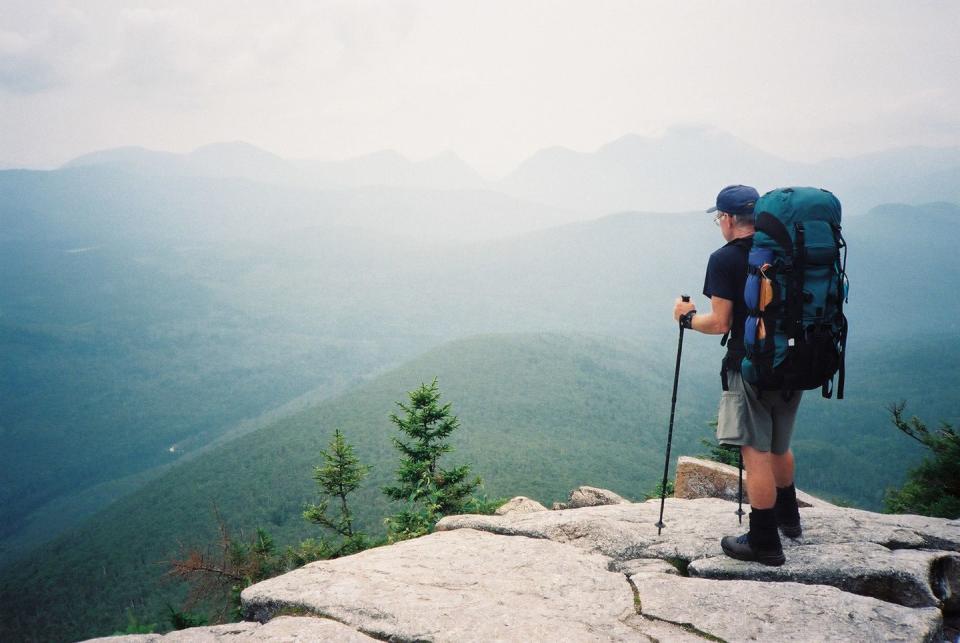What to Know About Hiking the Appalachian Trail

Stretching more than 2,190 miles across 14 different states, the Appalachian Trail may be the best long-distance hiking route in the entire world. Each year, 3 million people trek at least a portion of the trail, with just a fraction of those walking its entire length. Those "thru-hikers" learn a lot during early days of their journey, and most will tell you there is no way to fully prepare for the challenge of walking the AT end-to-end other than just doing it. Still, here are some pearls of wisdom that can prepare you for the challenges ahead.
When to Start and Which Direction to Go
One of the biggest decisions you've got to make is when to start hiking the Appalachian Trail and which direction to go. Those two questions are closely related, as the time of year you begin your hike could dictate whether you travel north to south or vice versa.
Generally speaking, most thru-hikers start at the southernmost trailhead located on Springer Mountain in Georgia. That's because the northernmost section of the AT, which ends on Mt. Katahdin in Maine, is widely considered to be the toughest part of the entire trek.
Weather is a big factor, too. If you're getting under way in late winter or early spring, you'll want to start in Georgia so you can avoid the cold conditions and heavy snows that are common at the north end of the trail at that time of year. On the other hand, if you're getting under way during the summer, it may be best to start on Katahdin where the temperatures will be much cooler than down south. This will give the hotter sections of the trail a chance to cool off before you arrive. Should you decide to start during the fall, start in Maine and travel south at a rapid pace, as you'll want to avoid the early onset of winter and get into the warmer sections before the snow begins to fly.
Either way, plan on spending a considerable amount of time on the trail. On average, most thru-hikers end up spending about six months on the AT traveling from end to end. The record for the fastest time, however is just 45 days, 22 hours, and 38 minutes. That was set by ultrarunner Karl Meltzer in 2016. That's an average of about 48 miles per day, in case you're considering going after the mark.
Travel Light … But Not Too Light
Ultralight hiking is all the rage these days, and everyone is looking for ways to cut ounces from their packs. This helps you travel faster and reduces wear and tear on your body over the course of the days and weeks you'll spend out on the trail. Ultralight backpacks, tents, sleeping bags, and stoves have helped greatly in this endeavor. It is now possible to walk the entire length of the Appalachian carrying a load of less than 25 pounds. Depending on how experienced and adventurous you are, you might even get away with carrying considerably less.
That said, it is okay to bring a few luxuries with you, even if it does add a bit of weight. For example, a lightweight camping chair will seem like a comfortable recliner at the end of a long day, while a French press coffee maker just might make rolling out of the sleeping bag in the morning a bit easier too. Yes, true ultralight hikers will scoff at this bit of advice, but the rest of us appreciate a few simple creature comforts when things aren't going our way.
It's Possible to Hike End to End Without Carrying a Tent

Want to shave a little extra weight from your pack? Try hiking the AT without a tent. It isn't widely known, but the trail has more than 250 huts located along its length, all of which can be used for free. These shelters were built to be roughly a day's hike apart, although the distance between them varies wildly at times. In theory, the trail should average one cabin every 8 miles or so, but in reality they can actually be as much as 30 miles apart depending on the terrain and the location of fresh water. Still, if you know how far you have to go to the next hut and plan accordingly, you very well could leave your tent at home.
Test Your Gear Before You Go
The Appalachian Trail is no place to test new gear for the very first time. Be sure to give all of your equipment a try before you set out on your hike. If you can, take a weekend backpacking excursion along a local trail to make sure everything performs up to your expectations. This is especially true for your tent, sleeping bag, and rain gear. Those are items that are crucial to your long-term comfort, so you'll want to be sure that there are no unexpected failures. Also, break in your boots before you go. Blisters can be the bane of your existence on the trail.
Get in Shape Before You Hit the Trail, Too

Hiking the AT is exhausting, especially early on, and at the end of most days you're going to want to curl up at the campsite and go to sleep. Over time, your body will get used to the demands of the trails and you won't think twice about covering serious mileage each day. You can save yourself a lot of suffering if you get yourself in shape before you start your trek. In the weeks leading up to the hike, head out to your local trails and go for a walk while carrying a full pack. Alternatively, mix in some running and cycling, as those activities will not only build cardiovascular strength but powerful leg muscles too. By the time you set out on your trek, you'll be much more prepared for what the trail throws at you.
You'll Encounter More Cars Than You Expect
While it is true that the Appalachian Trail winds its way through some of the most remote areas of the Eastern United States, it also crosses more roads than you might expect along the way. Don't be too surprised when you suddenly-and unexpectedly-find yourself standing alongside a busy highway waiting for an opportune moment to dash across. It happens more frequently than you might think, and while it may disrupt the illusion of hiking through an uninterrupted wilderness, it's part of life on the AT. Besides, some of those roads will invariably lead to a nearby town where you might find a place to resupply, or even treat yourself to a luxury or two that you've been missing before resuming the trek.
You'll Go Up and Down-A Lot

The highest point along the Appalachian Trail is found near Clingman's Dome in the Great Smoky Mountains of Tennessee. There, hikers climb up to a height of 6,625 feet. That doesn't sound like much when you consider all of the 14,000-foot peaks in the American West, but because the AT pretty much follows the spine of the Appalachian Mountains, there is a lot of elevation gain and loss along the way. The total amount of climbing for the entire 2,000-plus-mile route is roughly 515,000 feet, or the equivalent of going to the summit of Mt. Everest more than 17 times. In other words, don't expect too many flat sections, because you'll either be going up or down most of the way. When training for the hike, be sure you prepare on similar terrain.
Beware of Bears
Wildlife is somewhat common along the trail, and it isn't unusual to spot deer, squirrels, snakes, raccoons, and countless varieties of birds. Most of those animals will scurry off without giving you a second look, but the one thing you need to be wary of are the bears – although probably not for the reasons you might expect. The black bear found in the Eastern U.S. tend to be shy and nonaggressive for the most part, usually making themselves scarce at the sound of approaching hikers. But they also won't hesitate to wander into your campsite at night in search of food if it is available. To avoid having your pantry cleaned out by a hungry visitor, be sure to use a bear canister to store all of your food securely. Than, before turning in for the night, hang it from the branch of a tree where it is well out of reach.
Bonus Tip: In celebration of the summer solstice, June 21st has been declared Naked Hiking Day. If you happen to find yourself on the Appalachian Trail on that date, chances are you might run into some fellow hikers who are observing the tradition. Don't be alarmed; it's all in good fun, although it can be a bit surprising at first. And should you decide to join in, be sure to use sunscreen. Lots and lots of sunscreen.
You Might Also Like

